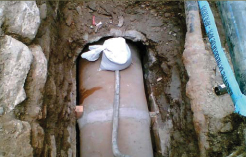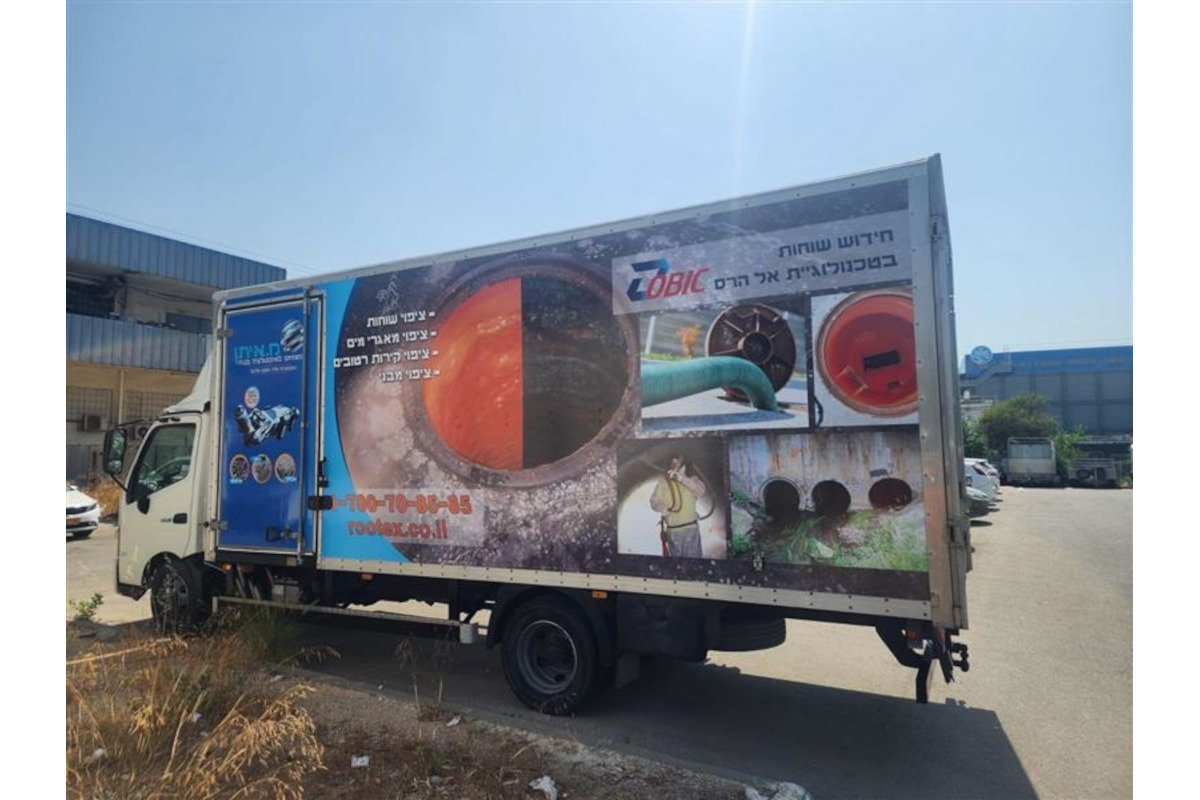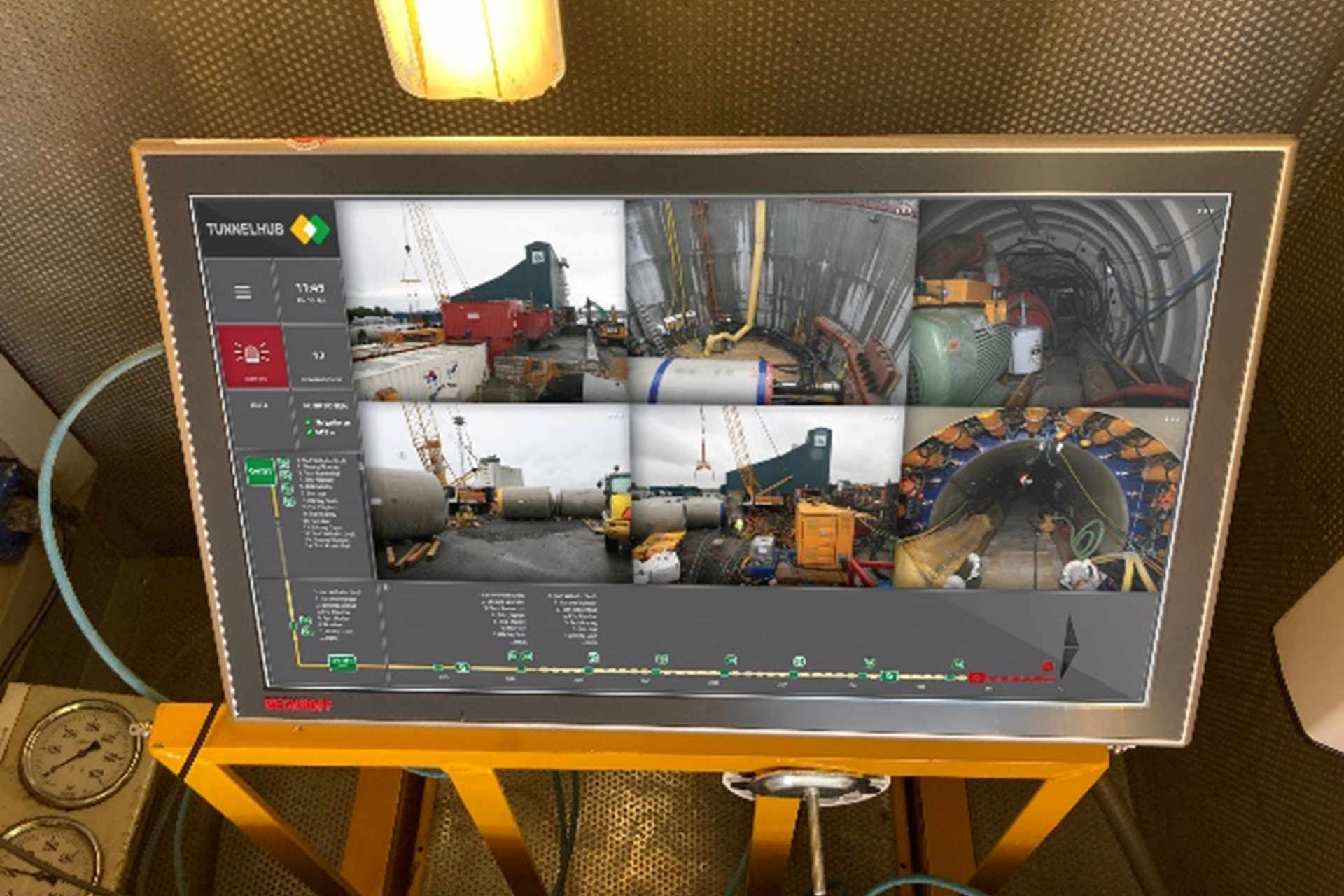Reforming Infrastucture
January 1, 2008
 Insituform Technologies Ltd. of the United Kingdom (ITL) has a world renowned reputation for CIPP lining. Something perhaps not so well known is that the company also has a 30-year history of high-quality glass reinforced-plastic (GRP) liner installations.
Insituform Technologies Ltd. of the United Kingdom (ITL) has a world renowned reputation for CIPP lining. Something perhaps not so well known is that the company also has a 30-year history of high-quality glass reinforced-plastic (GRP) liner installations. ITL has the capacity to install GRP liners from as little as 600-mm diameter (or 750-mm x 500-mm in egg-shaped sewers) up to as large as 2,000 mm in diameter (or 2,000-mm x 1,500-mm in egg-shaped sewers). The company can also install special bespoke shapes upon request.
In early 2007, ITL established a branch office in Romania and since then, has been involved in some major GRP lining work across the country. Based on ITL’s early successes, in mid-2007 Insituform Balcani S.R.L. was formed in Romania.
Romania is a country on the eastern fringes of Europe, and in 2007 became one of the newest members of the European Union (EU). It is a country that has had what might be conservatively termed a “colorful” history. From revolution to constitutional monarchy and from communism to democratic EU membership, it is a country that, in its time, has seen many changes.
Throughout history, the country, and in particular its capital Bucharest, has been able to boast some of the finest architecture in Europe. However, the advent of the communist state for most of the latter half of the 20th century meant that much of its best architecture was flattened to make way for modern buildings. Fortunately, this was not the case in the historic center of Bucharest, which seemed to have missed the worst of the ravages of the communist rebuilding program, and so retains much of its historical architecture and picturesque narrow streets.
Since joining the EU, the Romanian economy has been bolstered by more than £ 9 billion of foreign investment, which has allowed some major reconstruction works to be undertaken.
Bucharest is the main political and administrative center of the country, being the residency of the presidency, the parliament and the government, as well as the headquarters of many political parties, cultural and educational institutions, financial and commercial institutions.
For the historic center of Bucharest, being ignored in the communist rebuilding program has been both a blessing and a curse in that, while having been passed by during the building programs, much of it has fallen into disrepair, including large sections of its drainage system.
As part of a major restoration scheme for Bucharest, local authorities have introduced a project known as the “Refurbishment of Roads and Utilities within the Pilot Area A of the Historic Zone Bucharest.” This project commenced in October 2006 and runs to April 2008, with the potential for subsequent work. The current phase of the work is valued at some £20.7 million and requires renovating certain sections of the historic center of Bucharest’s sewer network.
The work is funded by a grant worth £1.8 million from the Dutch Government, £8 million EU funds administrated by EBRD and £10.9 million from the budget of Bucharest City Hall.
The project is managed for the city authorities by general contractor Sedesa Constructions and Services Rom S.R.L. on behalf of Sedesa Obras y Servicios S.A. of Spain. Sedesa is an established business group with more than 60 years of experience and international operations. Building on this background, the company is currently in the midst of a major strategic plan, which has involved significant international expansion. Today, Sedesa boasts a solid presence in several European countries, while continuing to enter new markets on a global scale.
Sewer Renovation
In terms of the sewer works, a tender was drawn up that named ITL as the renovation subcontractor. ITL was chosen due to its extensive experience in the sewer renovation market worldwide, which it has established on a vast variety of projects over the past 30 years, and the availability it offered in terms of the variety of trenchless renovation systems it employs.
ITL, through its branch office in Romania, won the contract valued at approximately £3 million to complete the work in Bucharest, which included initial cleaning and CCTV inspection of some 3,000 m of the existing sewer network. Subsequent to this preliminary work, ITL was required to develop a full and detailed construction design of the proposed renovation scheme that would be required to completely refurbish the surveyed sections of sewer.
With completion of the planning stages, the project ultimately required the use of both GRP segmental lining and CIPP lining for the rehabilitation of the mainline sewers lengths; internal rehabilitation of the existing manholes using grout injection techniques over a surface area of about 2,037 sq m; lining of the lateral services connecting to the mainline sewers using CIPP techniques (a total of about 1,200 m in length) and a final CCTV survey and report of the completed works. In total, the project duration was expected to be 370 days. There also was the possibility that subsequently the project could be extended to include further sewer lengths.
ITL commenced work on the project with the cleaning and CCTV survey program. This was followed by the engineering design work.
In April 2007, ITL started the GRP installations for the rehabilitation of an egg-shaped pipe in Gabroveni Street. This 225-m length was completed on May 31. Installation continued with a GRP 50-m lining in an egg-shaped sewer beneath Selari Street (Section 2), which was completed on June 25. In July, work started in another egg-shape pipe beneath Lipscani Street (Section 1). This 205-m length was completed on Aug. 27. In early September, the next stage of the project started with the GRP lining of an egg-shape sewer beneath Franceza Street.
GRP Lining
 GRP lining is classed as a segmental lining system. This means that preformed/prefabricated liner sections are the basis of the lining system. A GRP liner is essentially a fiber-glass/resin product that is manufactured and molded to the precise size and shape of the pipeline it is designed to rehabilitate. The design is normally based on the minimum dimension permissible within the deteriorated pipeline under repair. This ensures that the liner can be installed throughout the pipe length without any deformation in the host pipe preventing access. GRP liners can also be used to negotiate bends in pipes by use of short length liner pipes.
GRP lining is classed as a segmental lining system. This means that preformed/prefabricated liner sections are the basis of the lining system. A GRP liner is essentially a fiber-glass/resin product that is manufactured and molded to the precise size and shape of the pipeline it is designed to rehabilitate. The design is normally based on the minimum dimension permissible within the deteriorated pipeline under repair. This ensures that the liner can be installed throughout the pipe length without any deformation in the host pipe preventing access. GRP liners can also be used to negotiate bends in pipes by use of short length liner pipes. As the GRP liner segments are preformed to the minimum dimension of the host sewer, their installation is normally achieved manually with specially fabricated end profiles that allow the segments to knit together to form the completed lining length. Within the sewer, the liner segments are positioned using spacer blocks to create the lining, with an annulus between the liner outer wall and the pipe inner wall. Normally this annulus is grout filled as the lining construction advances. This provides the necessary bond between the host pipe and the new liner and adds to the structural integrity of the completed system.
For the Bucharest project, the GRP liner segments have been manufactured by Stanton-Bonna in the United Kingdom and shipped to Romania by road transport.
Once a lining length is completed, the pre-surveyed positions of any laterals are reopened to remake the connection.
It is only once the main GRP sewer lining is completed that the lateral connections are renovated. The CIPP lining installations for these laterals is undertaken from within the main sewer. Subsequent to each lateral lining, the main/lateral connection is sealed completely using the new extended lateral connection repair connection seal, which ITL has recently developed in conjunction with lining product specialist Trelleborg-epros.
Other Works
In other works, the mainline sewer CIPP linings on the project will comprise some 1,711 m in length and with the Insituform process lining technique using water inversion/hot water curing techniques.
Lateral connection linings for these sections will be undertaken once CIPP work has been completed and the lateral connections have been remade into the mainline sewers. Sealing of the connections will be completed again using the new lateral connection repair seals.
For the general contractor, Sedesa Constructions and Services Rom S.R.L., project manager Bogdan Mocanu said: “The project “Refurbishment of Roads and Utilities within the Pilot Area A of the Historic Zone Bucharest” is the first high-quality project, in comparison with the other projects from Romanian historical cities like Sibiu and Sighisoara, which has aimed for the reinforcement of the urban architecture and of the streets, not the refurbishment and the modernization of the utilities.
“It is an animated project which modifies and adapts the final purpose, depending on the archaeological discoveries, using technical solutions for saving and protecting the city. So, maintaining the unique Romanian character remains the main challenge for the beneficiary, the general contractor and subcontractors.”
ITL also recently won a major GRP installation contract with Thames Water in the United Kingdom for lining work on the Crossness sewer treatment plant. The contract is valued at more than £1 million and comprises the installation of GRP liners of 1,400 mm diameter, 945 mm x 1,400 mm ovoid and 2,000 mm x 1,370 mm ovoid cross-section over a total length of about 1,000 m. The contract also includes the renovation of 13 access shafts including new ladders and landings.
Ian Clarke is president of No-Dig Media Services, based in the United Kingdom.




